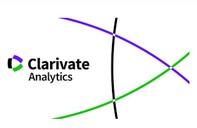BELIEFS AND ATTITUDES ON VIOLENCE AGAINST WOMEN IN PARTNER: SOCIO-DEMOGRAPHICS, FAMILIAR AND FORMATIVE DETERMINANTS
Abstract
At present domestic violence is considered a social problem of first magnitude and is analyzed since a perspective multicausal. But, even since this point of view, is considered that in the base of this causal pyramid there would be a sexist conception of the aggressors, narrowly connected with the exacerbation of traditional male model (Corsi, 1995; Heise, 1997). It given this supposed one, to analyze the determinants of these beliefs and attitudes can suppose a prominent contribution to develop programs of early prevention against this form of violence that be more troops. This work analyzes the role of the formative, family, and sociodemographic factors as determinants of beliefs and attitudes sexists and tolerant toward violence against women in a sample of 1395 university students. Results obtained indicate that the factors studied explain a small percentage of these beliefs and attitudes (between 5% and 13% according to the cases). We described and analyze these results and their possible implications in the design of programs and preventive actions.Downloads
The works published in this journal are subject to the following terms:
1. The Publications Service of the University of Murcia (the publisher) retains the property rights (copyright) of published works, and encourages and enables the reuse of the same under the license specified in paragraph 2.
© Servicio de Publicaciones, Universidad de Murcia, 2022
2. The works are published in the online edition of the journal under CC BY-SA 4.0 license, a Creative Commons Reconocimiento-CompartirIgual 4.0 (legal text). You are free to:
- Share: copy and redistribute the material in any medium or format for any purpose, even commercially.
- Adapt: remix, transform, and build upon the material for any purpose, even commercially.
The licensor cannot revoke these freedoms as long as you follow the license terms, under the following terms:
- Attribution: You must give appropriate credit , provide a link to the license, and indicate if changes were made . You may do so in any reasonable manner, but not in any way that suggests the licensor endorses you or your use.
- ShareAlike: If you remix, transform, or build upon the material, you must distribute your contributions under the same license as the original.
No additional restrictions: You may not apply legal terms or technological measures that legally restrict others from doing anything the license permits.
This work is licensed under a Creative Commons Attribution-ShareAlike 4.0 International License.
3. Conditions of self-archiving. Is allowed and encouraged the authors to disseminate electronically pre-print versions (version before being evaluated and sent to the journal) and / or post-print (version reviewed and accepted for publication) of their works before publication, as it encourages its earliest circulation and diffusion and thus a possible increase in its citation and scope between the academic community. RoMEO Color: Green.















